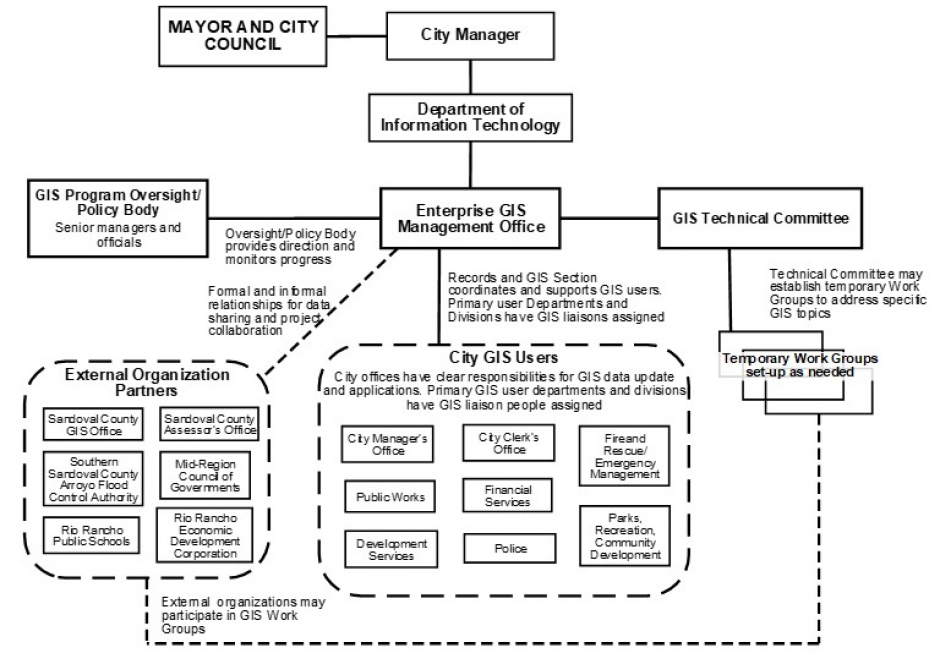FC-34 - Organizational models for coordinating GISs and/or program participants and stakeholders

- Compare and contrast centralized, federated, and distributed models for managing information infrastructures
- Describe the roles and relationships of GIS&T support staff
- Exemplify how to make GIS&T relevant to top management
- Describe different organizational models for coordinating GIS&T participants and stakeholders
- Describe the stages of two different models of implementing a GIS within an organization




FC-35 - Openness
The philosophy of Openness and its use in diverse areas is attracting increasing attention from users, developers, businesses, governments, educators, and researchers around the world. The technological, socio-cultural, economic, legal, institutional, and philosophical issues related to its principles, applications, benefits, and barriers for its use are growing areas of research. The word “Open” is commonly used to denote adherence to the principles of Openness. Several fields are incorporating the use of Openness in their activities, some of them are of particular relevance to GIS&T (Geographic Information Science and Technology) such as: Open Data, Free and Open Source Software; and Open Standards for geospatial data, information, and technologies. This entry presents a definition of Openness, its importance in the area of GISc&T is introduced through a list of its benefits in the fields of Open Data, Open Source Software, and Open Standards. Then some of the barriers, myths, or inhibitors to Openness are presented using the case of Free and Open Source Software (FOSS) and FOSS for Geospatial Applications (FOSS4G).